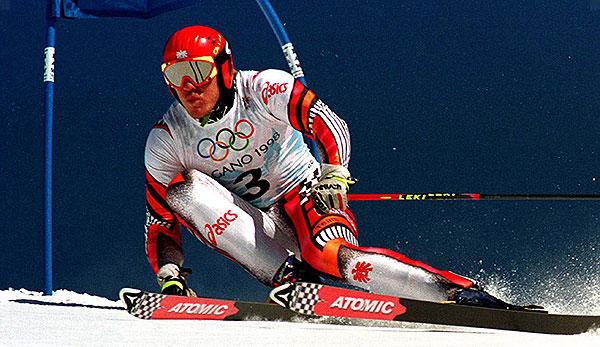2 Olympic gold medals, 3 World Championships triumphs, 54 World Cup races won, 4 overall World Cup victories: Hermann Maier is already one of the biggest in Alpine skiing history. But he already became a “Herminator” in those six days in February 1998, when he survived a “collapse of the century” almost unharmed at the Olympic Games in Nagano and shortly afterwards won super-G and giant slalom gold.
The 13th. February 1998 was a Friday that has long been a permanent fixture in the memories of ski fans: Maier, then 25 years old, will start almost exactly one year after his first World Cup victory as a top favourite at the Winter Games in Japan. The “Kraftmaier” from Flachau tries a crazy line at one of the key points on the descent in Hakuba, takes off from the tailwind accelerated like a rocket and flies upside down to a distance of about 30 meters before it hits several safety fences and fortunately lands in deep snow.
“So annoying, you just don’t get knocked out on the way out. You only have a few goals, and you should get them,”Maier recently told an ORF documentary about his first thoughts after the fall. While the pictures went around the world and later made the American photographer rich, Maier became Olympic gold medallist in Super-G three days later, despite bruises and bruises all over his body, shortly afterwards also in giant slalom.
Even if the expression had appeared before, Nagano was the birthplace of the “Herminator”, the “indestructible”. For Maier, as he admits today, had tried this line in spite of the known risk and at that time believed in a good outcome even in the air. As Maier recalled, his self-confidence, which was almost bordering on “megalomania” (Maier), had been so great:”As with these Olympic Games, I never moved to the limit again later on,”Maier recalled. If I still win gold, I am immortal,”he said immediately after his Super-G run.
You may think the saying is arrogant, but Maier also sees it loosely two decades later:”As a youngster, that’s exactly the right thing to do. You’re an athlete at the time and you don’t need to tell the wisdom.”
Rather, the nimbus of the “Machine Maier” became even stronger three years later. In a life-threatening motorcycle accident in his home town of Salzburg, he almost lost his right leg in the summer of 2001. The fact that 16 months later he won another Super-G in Kitzbühel made him the most fascinating figure in skiing and probably the only ski racer of the present to be known all over the world.
The Nagano fall and the motorcycle accident, embedded in the hollywood-ready story of a Salzburg mason who, with an iron will and unconventional training methods, managed to become the light figure in alpine skiing despite unfavourable circumstances, have created the reputation of the Salzburger. Maier himself, who was Austrian athlete of the year four times in a row between 1998 and 2001, does not make any judgement in this respect. All that was really important was never to be left lying down. Maier said that this had been a characteristic feature of him even as a child.
The childhood, Maier pondered in the current ORF documentary, was anyway “the most beautiful time”. That’s why he tries to keep his family out of the public eye as much as possible. In particular, his three daughters, two of them twins, born between 2013 and 2015:”In the meantime, no one knows for sure, as long as they can,” emphasized Maier,”They are supposed to live their own lives. But nothing was wrong”) to the fullest extent – free from the pressure of professional sport “I can do whatever I want to do. I don’t need justification for anything.”



















You must be logged in to post a comment Login